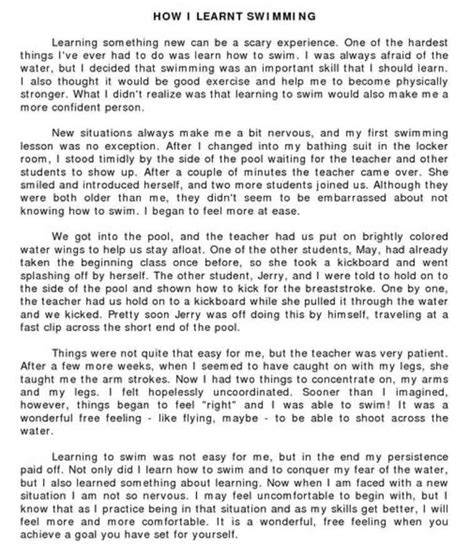Crafting a concise and effective 5-paragraph essay is an essential skill for students in various academic disciplines. Whether it’s for a formative assessment or a high-stakes exam, a well-structured essay can demonstrate your understanding of the topic and your ability to communicate your ideas clearly and persuasively. Here’s a comprehensive guide to help you write a compelling 5-paragraph essay:

Introduction
The introduction serves as the foundation of your essay. It introduces the topic, establishes a clear thesis statement, and provides context or background information. Begin with a strong hook, such as a startling statistic, a thought-provoking question, or a brief anecdote that captures the reader’s attention. Then, present your thesis statement, which should be a concise and specific statement that articulates your main argument or claim. Finally, provide any necessary background or context to support your thesis.
Body Paragraph 1
In the first body paragraph, develop the first supporting point for your thesis. Start with a topic sentence that clearly states the point you want to make. Provide specific evidence to support your claim, such as facts, examples, or quotations from credible sources. Use strong, active language and avoid restating the thesis verbatim. Conclude the paragraph with a transitional sentence that leads into the next supporting point.
Body Paragraph 2
The second body paragraph follows the same structure as the first. Start with a topic sentence that presents another supporting point. Provide evidence to support your claim and explain its significance. Use clear and concise language, and ensure that the evidence you present is relevant and credible. Conclude the paragraph with a transitional sentence that connects it to the remaining body paragraph.
Body Paragraph 3
In the third body paragraph, develop a counterargument or opposing viewpoint. Doing so demonstrates your awareness of potential opposing perspectives and strengthens your essay’s credibility. Begin with a topic sentence that acknowledges the counterargument. Present evidence to support the counterargument, but be sure to emphasize its limitations or weaknesses. Explain how your thesis is still valid despite the opposing viewpoint.
Conclusion
The conclusion summarizes the main points of your essay and restates your thesis in a fresh and compelling way. Begin with a restatement of your thesis, using different wording to avoid repetition. Summarize the key supporting points you presented in the body paragraphs. Then, provide a brief but impactful closing statement that leaves a lasting impression on the reader. Your conclusion should be concise, thoughtful, and memorable.
Effective Strategies for Writing a 5-Paragraph Essay
- Use strong verbs and active voice. Avoid passive language that weakens your writing. Use verbs that convey a sense of action and precision.
- Support your claims with evidence. Cite credible sources, such as peer-reviewed journals, reputable websites, or academic books. Provide specific examples, statistics, or quotations to support your arguments.
- Organize your thoughts logically. Use transitional words and phrases to guide the reader through your essay. Maintain a cohesive flow of ideas throughout each paragraph and the entire essay.
- Proofread carefully. Once you have finished writing your essay, proofread it carefully for any errors in grammar, spelling, and punctuation. Ensure that your essay is well-organized, clear, and concise.
Tips and Tricks for Developing Your Essay
- Brainstorm ideas. Before you start writing, take time to brainstorm ideas and gather information on your topic. Use a mind map, freewriting exercises, or discussion with peers to generate potential thesis statements and supporting points.
- Create an outline. Once you have a good understanding of your topic, create an outline to organize your thoughts and ideas. This will serve as a roadmap for writing your essay and ensure that it flows logically.
- Seek feedback. Ask a friend, classmate, or teacher to review your essay. Their feedback can help you identify areas for improvement and strengthen your writing.
- Use a citation generator. Properly citing your sources is essential to avoid plagiarism. Use a citation generator, such as MLA or APA, to ensure that your essay adheres to academic citation conventions.
Tables for Reference and Support
Table 1: Common Essay Structure
| Paragraph | Purpose |
|---|---|
| Introduction | Introduce topic, establish thesis |
| Body Paragraph 1 | Support point 1 |
| Body Paragraph 2 | Support point 2 |
| Body Paragraph 3 | Counterargument or opposing viewpoint |
| Conclusion | Summarize main points, restate thesis |
Table 2: Effective Transitional Words and Phrases
| Transitional Word/Phrase | Purpose |
|---|---|
| Moreover | To add another point |
| In contrast | To show a contrast |
| Specifically | To provide a specific example |
| Consequently | To show a consequence |
| Nevertheless | To acknowledge an opposing viewpoint |
Table 3: Common Essay Errors
| Error | Description |
|---|---|
| Vague thesis | Thesis statement lacks specificity or clarity |
| Lack of evidence | Insufficient evidence or support for claims |
| Poor organization | Ideas not presented in a logical order |
| Grammatical errors | Incorrect grammar, spelling, or punctuation |
| Plagiarism | Using someone else’s work without proper citation |
Table 4: Motivations for Writing a 5-Paragraph Essay
| Motivation | Description |
|---|---|
| To demonstrate understanding | Show your grasp of a topic |
| To develop critical thinking skills | Analyze and evaluate information |
| To improve writing ability | Enhance your communication skills |
| To earn a good grade | Meet academic requirements |
| To persuade or inform readers | Convince or educate an audience |
